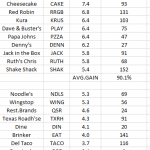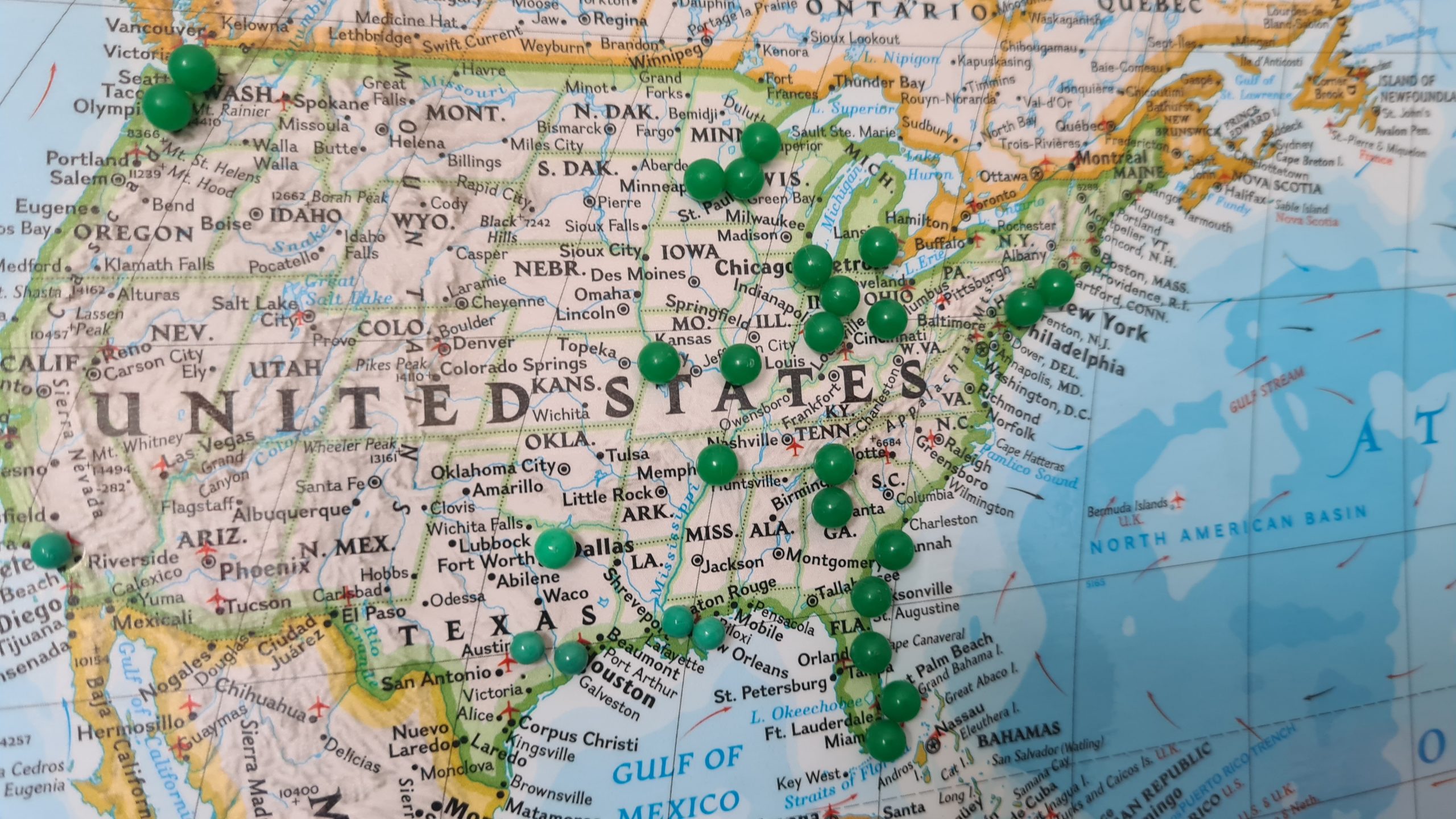I cannot emphasize enough that any franchise company’s overall growth and success depends on its franchisee’s success. Your restaurant concept needs to have proven methods along with quantifiable sales results.
Warning Signs Your Restaurant Is Not Ready To Franchise
By Gary Occhiogrosso – Managing Partner, Franchise Growth Solutions, LLC.
As a former franchisor and now a consultant to the franchised restaurant industry, it has always been my role to promote, expand, improve, and advocate franchising as the most influential business development tool ever created. As my regular readers might imagine, the mere thought that I would approach the idea that a business would not be better off as a franchise is personally challenging. That said, I have worked with scores of companies and seen hundreds of concepts in the franchise industry. Some of which left me scratching my head as to why anyone would believe a particular idea would be a viable business under a franchise model. As a result, and as a follow up to my previous article, I’ve compiled my top four warning signs for delaying a franchise launch or avoiding franchising your restaurant altogether. It’s a short checklist when deciding if your business is ready and feasible for franchising. These reasons alone or any combination would cause me to pause and “go back to the drawing board” before launching a franchise brand.
No Proven Operating Prototype
On occasion, the owner of a marginally successful restaurant or one with a minimal track record of successful performance considers expansion through franchising. Sometimes, the wannabe franchisor may believe that building additional restaurants without the founder’s initial mistakes using a franchisee’s money will make up for a brand’s shortcomings and somehow be successful. Not only is this thinking irresponsible, but it disregards the fact that potential franchise buyers expect a franchise system that works and is proven. Using a franchisee’s enthusiasm and investment as your “canary in a coal mine” will almost always end in disaster.
Ed Teixeira, a former franchisor executive and franchisee with 40 years of franchising experience states “that when franchising an existing business, a key precept is that the business used to develop the franchise must be a profitable operation. To expect a new franchisee in a startup franchise program to surpass the existing business owner’s financial performance is a dangerous strategy. In this case, the fledgling franchisor should identify why his business is not profitable and correct the situation before expecting a new franchisee to solve the problem. A flawed business used to develop a new franchise will end up creating a flawed franchise.”
I cannot emphasize enough that any franchise company’s overall growth and success depends on its franchisee’s success. Your restaurant concept needs to have proven methods along with quantifiable sales results. Every system in your operation, from recipes to marketing, needs to be documented and “teachable” through your confidential operations manual. If this is not the case for your restaurant, take a step back and continue working on the total operating system before offering franchises.
Your Menu Is Too Big Or Complicated To Replicate.
Chef owners often fall into the trap of creating an elaborate, difficult to produce menu because their professional skill set is highly developed. They are not looking at the reality of who their franchisees may be and the level of experience they bring to the table. Delivering a chef-quality menu is perfect for a chef, but maybe not so much for a franchisee or a franchisee’s young entry-level employee. There is nothing wrong with a unique, high-quality menu in a franchised restaurant. In fact, it’s a great thing. Innovative and delicious food is one of the points of differentiation that every restaurant should pursue. However, in the world of franchising, it’s about delivering a product and experience the same way for every customer, flawlessly and consistently. Your menu needs to be simple to execute and served without the complexities of a fine-dining, chef-driven process. Your menu also needs to be crave-able, profitable, and very focused.
Fred Kirvan of Kirvan Consulting LLC, a New Jersey-based restaurant development and operational assessment firm for the franchise industry, says: “many independent restaurateurs find it challenging to embrace the idea that less is best. Offering guests too many choices or menu items with complex procedures may create confusion for the guest; it can negatively impact the overall cost of goods, and often increases employee mistakes.”
You Haven’t Branded Your Concept.
People buy brands. When customers step into a successful franchised restaurant, there is usually a theme and a brand voice surrounding the guest. The guest leaves with more than just a satisfied stomach. You want them to remember the service, the decor, the music, and the restaurant’s messaging. Many restaurants simply focus on the food without regard to the many facets of an overall guest experience. Suppose you have not developed a distinctive decor and brand identity. In that case, you may have difficulty competing when it comes to selling franchises because you haven’t created the necessary points of differentiation that attract potential franchise owners. Your restaurant’s branding is not merely your food or the price point. Creative, disruptive restaurant brands are not only attractive to consumers but also to those seeking to invest in a franchise. That is why although some restaurants may sell similar cuisines, the successful franchise brands do it with a new twist and an exciting environment.
You Lack Sufficient Capital To Launch Your Brand
One of the most significant failings of fledgling franchisors is underestimating the cost of launching a brand into the sea of franchises. Some believe they can bootstrap the effort and fund their company’s growth by using the upfront franchise fees collected. I have always stated (sometimes at the risk of losing a potential new client) that “on a good day; you won’t lose money on a franchise sale.” In many instances, that’s the best-case scenario an emerging brand should expect. Franchisors should set their sights on royalties as their revenue stream, not initial franchise or license fees. You’ll need to consider the real cost of the franchise sale. For a startup brand or an emerging brand, the price to generate enough leads to sell one new franchise may be anywhere from ten thousand to fifteen thousand dollars. No matter what you may want to believe, franchises do not “sell themselves”.
Additionally, the sales commission to an outsourced franchise sales organization, in-house salesperson, or franchise broker may range from 40% to 60% of the initial franchise fee. Then there are legal fees as well as the cost to train and support the new franchisee. According to Evan M. Goldman, an attorney and the Chair of the Franchise Law practice at A.Y. Strauss LLC, “the legal costs to close a deal can range from a small amount ($1,000 or so) for a simple deal, to more than $5,000 for a complicated purchase with lots of requested changes by the franchisee.” Goldman adds, “without proper funding, you’re never going to sell that first franchise because it ‘takes money to make money.’ Undercapitalized franchisors face a difficult predicament whereby they can hold their limited cash but not be able to sell their franchise, or use all available money and potentially sell their first few franchises, but cannot support their franchisees. And to add to that, undercapitalized franchisors are potentially disastrous for franchisees who rely on the franchisor to provide services (advice, marketing, etc.), which they cannot do without capital. In essence, it is mutually-assured destruction.”
Carefully Weigh All The Factors Before Franchising
Although my list covers what I think are the most crucial reasons not to franchise your restaurant, there are numerous others. Everything from the market needs to unit saturation in the space to the economy at launch time. Indeed, my thoughts here are not intended as a deterrent to franchising your restaurant but rather a professional recommendation to look at all aspects and apply critical and long term thinking to the endeavor.














